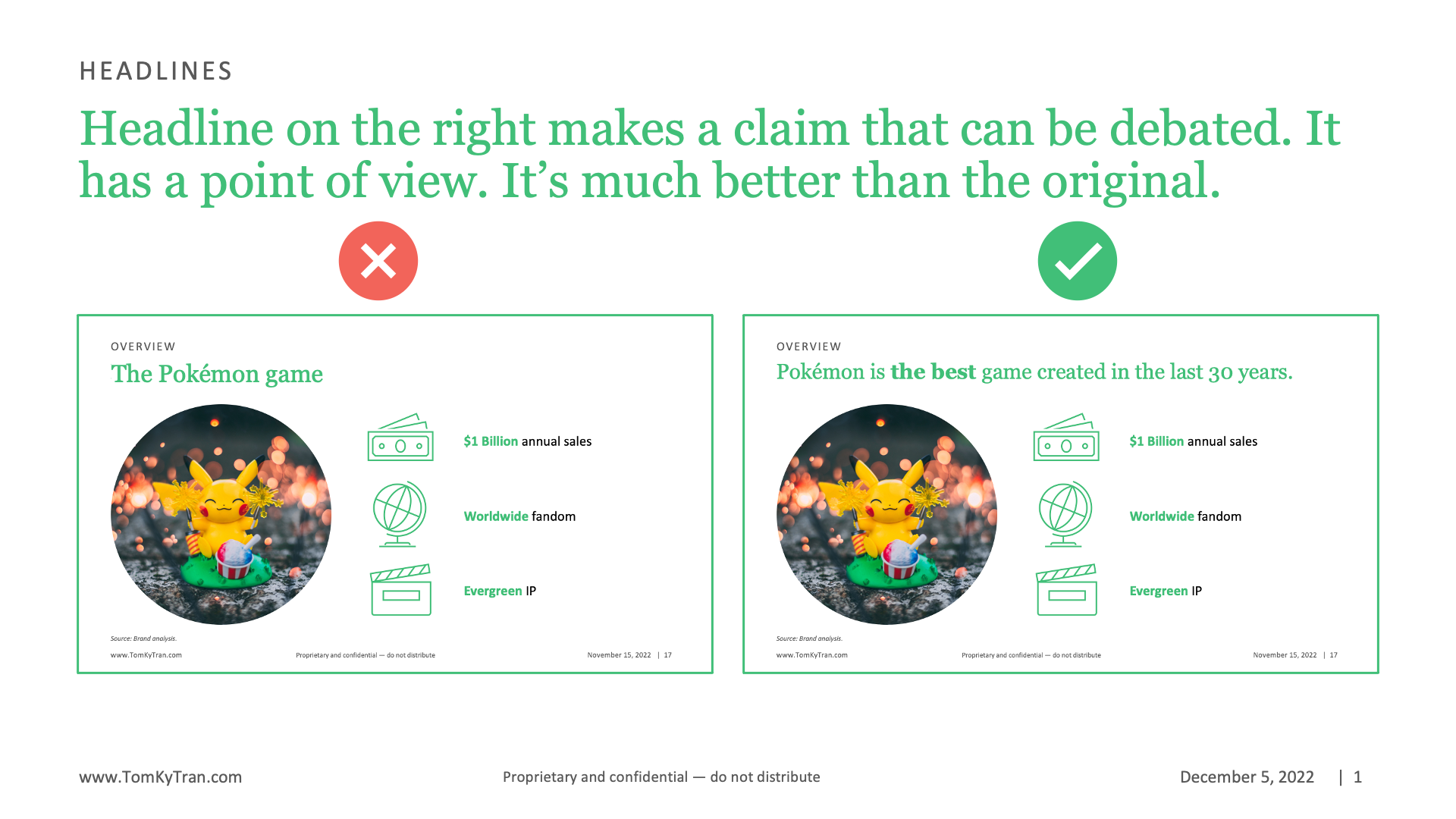Why write strong headlines?
Are you a recent grad who is just starting to build presentations in your professional career? If so, then you know how important it is to make a good impression on your audience. But how do you create presentations that are engaging and effective?
Even if you're a few years out of school and into your career, you could also be overlooking one of the simplest changes that could make your presentations much stronger.
Weak headlines
Are you writing weak slide headlines?
There are a few reasons why most people write bad PowerPoint slide headlines and not even know it.
One reason is that they may not realize the importance of a strong headline. A headline is often the first thing that a person sees on a slide, and it can have a big impact on how the rest of the presentation is perceived. Therefore, it's important to take the time to craft a strong, effective headline for each slide.
Another reason why people may write bad PowerPoint slide headlines because they may not know how to write a good headline. Writing a strong headline takes practice and skill, and not everyone is naturally good at it. I know it took me a while get a hang of it myself!
A third reason people may write bad PowerPoint slide headlines is that they may not put enough time and effort into crafting their headlines. It's easy to throw together a quick, generic headline and move on to the next slide, but this can result in weak, uninteresting headlines that don't do your presentation justice.
Strong headlines
To write strong headlines, you need to take the time to think about your message, your audience, and the purpose of each slide, and then craft a headline that reflects this information.
- Make it clear and concise. A good headline should clearly and concisely convey the main point of the slide. Avoid using vague or overly complex language, and try to keep your headline to a single sentence or phrase if possible.
- Make it relevant. Your headline should be directly related to the content of the slide, and should provide context or background information that will help your audience understand and engage with the rest of the presentation.
- Make it interesting. A strong headline should be interesting and engaging, and should grab the attention of your audience. Try to use language that is lively and interesting, and avoid using dull or generic phrases like "Introduction" or "Conclusion."
- Make a point. A strong headline should make a point, rather than simply describing the information on the slide. It should have a point of view and provide context or background information that will help your audience understand and engage with the rest of your presentation.
- Use active language. A strong headline should use active language that is lively and engaging. Avoid using passive or dull language that doesn't grab the attention of your audience or convey your message effectively.
- Be specific. A strong headline should be specific and focused, rather than vague or general. Avoid using broad, generic phrases like "Introduction" or "Conclusion," and instead use language that is specific to the content of the slide and the overall message of your presentation.
- Use keywords. A strong headline should include keywords that are relevant to the content of the slide and the overall topic of your presentation. This will help your audience understand the purpose of the slide and make it easier for them to follow along with the rest of your presentation.
- Avoid unnecessary words. A strong headline should be concise and to the point, and should avoid using unnecessary words or filler phrases. Keep your headline short and focused, and only include the information that is necessary to convey your message effectively.
Examples
Here are a few examples of strong and weak headlines that you can use as a guide:
Strong headlines:
- "How our new technology is transforming the industry"
- "The top five trends that will impact your business in the next year"
- "Why our company is the best choice for your needs"
Weak headlines:
- "Company history"
- "Our products"
- "Q4 results"
Here's a visual example from a workshop for new grads and non-business majors I'm currently working on.

As you can see, strong headlines make a point and are supported by the content on the slide, while weak headlines simply state the topic of the slide and leave it up to the audience to make their own conclusions from the content.
In conclusion, writing strong headlines for your PowerPoint slides is an important part of creating an effective presentation. By following the tips above, you can craft good slide headlines that grab the attention of your audience, provide context and background information, and help ensure that your message is understood and remembered.







